Trivia Browser
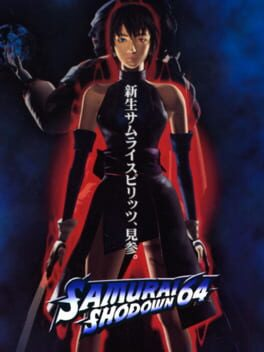
▲
1
▼
Shiki's personality and some of her win quotes were based on Rei Ayanami from the anime "Neon Genesis Evangelion".

▲
1
▼
Nicotine Caffeine's name originated from Adachi's addiction to coffee and cigarettes during the game's development.
"I came up with the name "Nicotine Caffeine" because I was addicted to coffee and cigarettes when we were developing the game. I took the words "caffeine" and "nicotine" and changed them to kanji characters. I no longer smoke cigarettes."
"I came up with the name "Nicotine Caffeine" because I was addicted to coffee and cigarettes when we were developing the game. I took the words "caffeine" and "nicotine" and changed them to kanji characters. I no longer smoke cigarettes."
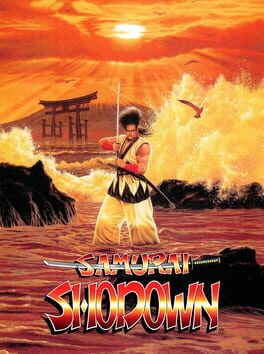
▲
1
▼
Adachi was originally going to make another ninja character that was very similar to Hanzo Hattori's design. However, because his wife was a fan of the 1987 manga Animal Doctor, he wanted to make a character that would be popular with the female market. Galford's character was inspired by the main character, Masaki Nishine, and his pet Siberian Husky, Chobi.

▲
1
▼
The idea for the Ikari gauge (renamed the POW bar in the Western release) was inspired by a Street Fighter II match that background designer Tomoki Fukui had with series creator Yasushi Adachi.
"Adachi came up with the idea, but the inspiration for the Ikari gauge came when the dev team was all playing Street Fighter 2 together for research purposes. Adachi and I were playing against each other and I frustrated him because I won. Adachi was so mad because he lost that he was silent for a minute. Then, he suddenly got up and shouted “Ikari gauge!” So we took that frustration, that anger and rage that players feel when they lose a battle, and decided to incorporate it into the game. That was where the inspiration for the Ikari gauge came from."
"Adachi came up with the idea, but the inspiration for the Ikari gauge came when the dev team was all playing Street Fighter 2 together for research purposes. Adachi and I were playing against each other and I frustrated him because I won. Adachi was so mad because he lost that he was silent for a minute. Then, he suddenly got up and shouted “Ikari gauge!” So we took that frustration, that anger and rage that players feel when they lose a battle, and decided to incorporate it into the game. That was where the inspiration for the Ikari gauge came from."

▲
1
▼
The game was designed to illustrate the terror of fighting weapon-to-weapon and the impact of fighting with a sword. Thus, being hit by a weapon does significant damage to the opposing player. This punishing difficulty faced criticism during the game's development. As noted by series creator Yasushi Adachi:
"There was a lot of internal criticism about deducting so much life gauge with one attack. SNK management said this design had to be changed, but I thought it was very interesting to have players fight under the risk and fear of fighting with weapons and feel the destructive force of the sword, so I ignored them and kept it in the game."
"There was a lot of internal criticism about deducting so much life gauge with one attack. SNK management said this design had to be changed, but I thought it was very interesting to have players fight under the risk and fear of fighting with weapons and feel the destructive force of the sword, so I ignored them and kept it in the game."

▲
1
▼
Gen-An's character was inspired by Johnny Depp's titular character from the Tim Burton film Edward Siccorhands. When asked why Gen-An became a green, hunchbacked character instead of more resembling Depp, series creator Yasushi Adachi replied: "I think you’ll agree with me on this, but Genan is more handsome than Johnny Depp. [Laughs]"

▲
1
▼
Haohmaru and Ukyo are based on historical figures Musashi Miyamoto and Kojiro Sasaki from Sengoku era Japan, respectively. Nicotine is likely based on the Buddhist monk Takuan from the same era.
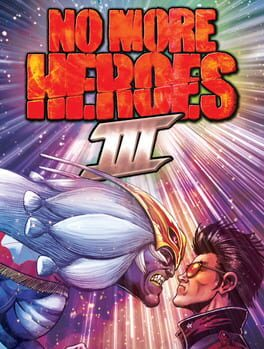
▲
1
▼
 The final battle between Travis Touchdown and Spoiler:Damon Riccitiello is a parody of the Super Smash Bros. series.
The final battle between Travis Touchdown and Spoiler:Damon Riccitiello is a parody of the Super Smash Bros. series. Director Goichi Suda stated in an interview that the idea for the fight being a "total rip-off" of Super Smash Bros. was originally a joke. However once they actually developing it, he felt this may end up becoming a problem because it felt "really, really close to the actual game" and had decided to change the idea. However, representatives from Nintendo and even Masahiro Sakurai himself liked the idea and told him to keep it in the game.
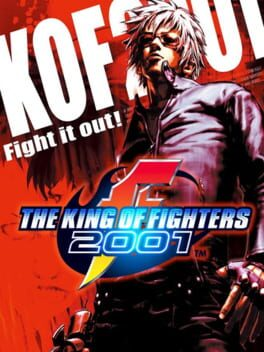
▲
1
▼
The inception of May Lee Jinju was at the request of the game's sponsor, Eolith, expressing a desire for a "Korean Athena" character. This request initially asked for an "idol-like visual fighter," which charged over time into what was in the final game. She was named after the person who was in charge of Eolith at the time.

▲
1
▼
According to game's producer and graphics/visual artist Daisuke Ishiwatari in a 1998 interview featured in The PlayStation (JP) magazine, he stated that he loved the light fantasy world featured in the Shonen Jump manga Bastard!! and wanted to make the setting of Guilty Gear similar to it, leading to Ishiwatari coming up with many different ideas that would further the game's development.

▲
1
▼
At the 2017 Emerald City Comic Con during a panel with American voice actor John DiMaggio, he explained that he was told to make Wakka's voice sound like an islander, with an island accent. At the time, he broke up with his girlfriend from Hawaii, so he came up with some Hawaiian impersonations which landed him the role of Wakka.
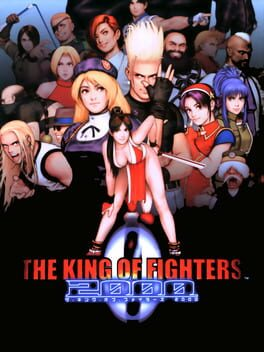
▲
1
▼
Hinako's design was initially based on the protagonist of the manga Jarinko Chie, who used sumo moves. The supervising designer, however, succumbed to insistent requests to use "a debutante" and Hinako gradually transformed into a wellborn young maiden. She was also originally going to fight barefoot, which was also dropped. The only thing that remained from her original concept was the athletic tape on her fingers.
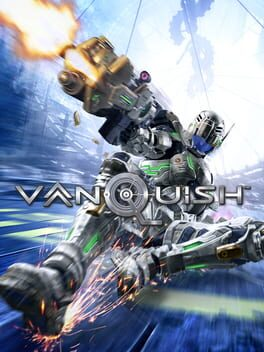
▲
1
▼
In a 2020 interview conducted by the YouTube channel Archipel with the game's creator Shinji Mikami, he talked about the development of Vanquish, which started after he left Capcom and joined PlatinumGames. While he claimed to not remember how he arrived at working on or coming up with the concept for Vanquish, he pitched 5 different project ideas beforehand to Sega and Platinum:
From the start, Mikami wanted to make an open-world game set in a universe similar to the film "Blade Runner", but due to budget, time and staffing constraints, he considered the project to be impossible to make. Regardless, Mikami drafted a design document that he formally pitched to Platinum as a coping mechanism in order to clear his head of the long-gestating idea and work on other projects, stating "I just couldn't switch my mind for a project that fit budget and resources before I gave form to this one. So I just presented it".
Afterwards he moved on to a completely different project; a cel-shaded game set in a universe akin to the works of Studio Ghibli entitled "The Witch and the Piglet". The game was about an evil witch who turned a prince into a piglet and cursed the accompanying village. The villagers would be friendly by day, but at night, they would turn into animals such as horses, pigs, and goats, and do "terrible things" every night, in turn revealing the villagers' evil sides. The main protagonist, a girl with "magical powers who could hover in the sky with an umbrella", had to defeat the witch and break the curse. Mikami believed the game was a mid-scale project that could be easily managed within a given budget and really wanted to make it happen, so he pitched it to Sega. However, Sega strongly declined the pitch, saying that they weren't looking for a game like The Witch and the Piglet.
Angered, Mikami moved on to another project designed exclusively for the Nintendo DS. The game was about a girl with psychic powers and an unknown serial killer who were confined in a hospital. The killer would murder people in the building one by one, and the girl had to figure out if the killer was a doctor, a nurse, or a patient. She used her powers to fight with the killer remotely, move things from a distance, take limited control of peoples' minds, and used a smartphone to send texts and chat during battles, all the while the killer would threaten to kill more people the closer she was to him. One of the central gameplay mechanics involved selecting floating Kanji on the Touchscreen to form two-word phrases such as "Drop Vase" or "Open Door", and watch the results on the hospital's surveillance cameras. Upon pitching it, Sega also rejected the game for the same reason as The Witch and the Piglet, stating the projects were too small and not what they were looking for.
Mikami then recounted an incident during the same meeting, where Sega's executives told him that they were looking for a "Taisaku", or a major project. In response, and angrier than before, he came up with a pitch on the spot called "Keiko and Taisaku", about two delinquent gang leaders, a boy and a girl dressed in high school uniforms, that fought each other, proclaiming "Here, you get Keiko and Taisaku, there's Taisaku in it so it works right?" Sega's executives silently ignored the pitch. Mikami recalled that after this incident came the back-and-forth talks that lead to him working on Vanquish.
Sometime in-between these events, Mikami also had an idea for a rhythm action game that he promptly scrapped after pitching it to Platinum, believing that the idea was not as fun as he had thought it was after presenting it.
From the start, Mikami wanted to make an open-world game set in a universe similar to the film "Blade Runner", but due to budget, time and staffing constraints, he considered the project to be impossible to make. Regardless, Mikami drafted a design document that he formally pitched to Platinum as a coping mechanism in order to clear his head of the long-gestating idea and work on other projects, stating "I just couldn't switch my mind for a project that fit budget and resources before I gave form to this one. So I just presented it".
Afterwards he moved on to a completely different project; a cel-shaded game set in a universe akin to the works of Studio Ghibli entitled "The Witch and the Piglet". The game was about an evil witch who turned a prince into a piglet and cursed the accompanying village. The villagers would be friendly by day, but at night, they would turn into animals such as horses, pigs, and goats, and do "terrible things" every night, in turn revealing the villagers' evil sides. The main protagonist, a girl with "magical powers who could hover in the sky with an umbrella", had to defeat the witch and break the curse. Mikami believed the game was a mid-scale project that could be easily managed within a given budget and really wanted to make it happen, so he pitched it to Sega. However, Sega strongly declined the pitch, saying that they weren't looking for a game like The Witch and the Piglet.
Angered, Mikami moved on to another project designed exclusively for the Nintendo DS. The game was about a girl with psychic powers and an unknown serial killer who were confined in a hospital. The killer would murder people in the building one by one, and the girl had to figure out if the killer was a doctor, a nurse, or a patient. She used her powers to fight with the killer remotely, move things from a distance, take limited control of peoples' minds, and used a smartphone to send texts and chat during battles, all the while the killer would threaten to kill more people the closer she was to him. One of the central gameplay mechanics involved selecting floating Kanji on the Touchscreen to form two-word phrases such as "Drop Vase" or "Open Door", and watch the results on the hospital's surveillance cameras. Upon pitching it, Sega also rejected the game for the same reason as The Witch and the Piglet, stating the projects were too small and not what they were looking for.
Mikami then recounted an incident during the same meeting, where Sega's executives told him that they were looking for a "Taisaku", or a major project. In response, and angrier than before, he came up with a pitch on the spot called "Keiko and Taisaku", about two delinquent gang leaders, a boy and a girl dressed in high school uniforms, that fought each other, proclaiming "Here, you get Keiko and Taisaku, there's Taisaku in it so it works right?" Sega's executives silently ignored the pitch. Mikami recalled that after this incident came the back-and-forth talks that lead to him working on Vanquish.
Sometime in-between these events, Mikami also had an idea for a rhythm action game that he promptly scrapped after pitching it to Platinum, believing that the idea was not as fun as he had thought it was after presenting it.

▲
1
▼
In a 2020 interview conducted by the YouTube channel Archipel with series creator Shinji Mikami, he stated that the idea for when the first Hunter makes his appearance to kill the player came from the film The Texas Chainsaw Massacre:
"Around the beginning you have this scene where the character enters that spooky house. There's that open door, then Leatherface appears and hits the character with an axe and kills him. He then drags him like cattle. I liked that sudden fear. It may be hard to grasp, but in the first Resident Evil there's the Hunter, a new creature that suddenly pops in and attacks you. I think that influence lives there a little."

▲
1
▼
In the Shivering Isles expansion, Sheogorath is the only character in the game to have a grown-out beard, and the player cannot grow one of their own. If you attack Sheogorath, he will teleport you far above an unmarked location on the map called "Punishment Point", where you will fall to your death among other corpses. If you make it to Punishment Point on your own, a corpse named "Sheogorath's Punished" can be found with the following Death Decree attached to him explaining the "heinous crime" that sealed his fate there:
"Sheogorath, Prince of Madness, Lord of the Never-There, Sovereign of the Shivering Isles, does, on this day, hence-forth make this decree:
Robert Wisnewski is the name of a member of Bethesda's art team that worked on the Shivering Isles expansion, presumably suggesting this Easter egg was a light jab at him for trying to grow a beard during development.
"Sheogorath, Prince of Madness, Lord of the Never-There, Sovereign of the Shivering Isles, does, on this day, hence-forth make this decree:
Robert Wisnewski
Citizen of the Shivering Isles, Resident of Bliss, and Honored Madman
has broken the laws and covenants of the Shivering Isles and offended the austere personage of Our Lord, through the following actions:
Attempting the Growth of a Beard, an Action Deemed Unseemly in the Eyes of Our Lord
It is further decreed that the actions of this citizen merit the strictest of punishments to be meted out at the earliest possible hour, in a manner to be chosen according to the Whims and Fancies of Our Lord Sheogorath"
Citizen of the Shivering Isles, Resident of Bliss, and Honored Madman
has broken the laws and covenants of the Shivering Isles and offended the austere personage of Our Lord, through the following actions:
Attempting the Growth of a Beard, an Action Deemed Unseemly in the Eyes of Our Lord
It is further decreed that the actions of this citizen merit the strictest of punishments to be meted out at the earliest possible hour, in a manner to be chosen according to the Whims and Fancies of Our Lord Sheogorath"
Robert Wisnewski is the name of a member of Bethesda's art team that worked on the Shivering Isles expansion, presumably suggesting this Easter egg was a light jab at him for trying to grow a beard during development.
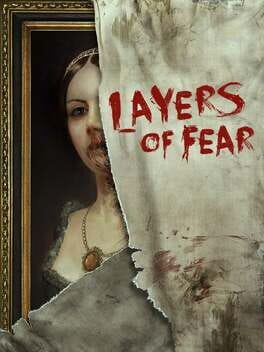
▲
1
▼
The game was inspired by “P.T.,” the playable teaser for ”Silent Hills,” a cancelled ninth installment for the Silent Hill franchise.
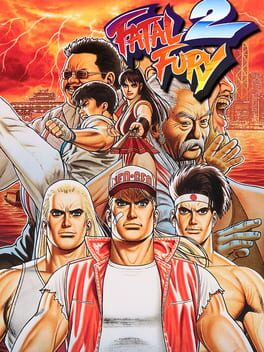
▲
1
▼
During the early development of Fatal Fury 2, SNK had two different ideas for Japanese characters: a male ninja named Ninja Master and a female idol. Ninja Master had been around 60% completed before being scrapped. However, many of his design elements were used for the design of the idol character, who would eventually become Mai Shiranui. The design for her "tail" was taken from his long scarf.
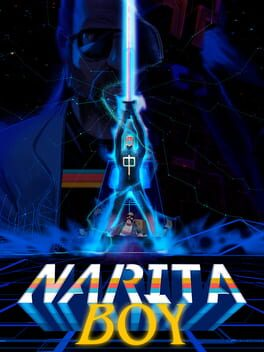
▲
1
▼
Director Eduardo Fornieles stated that the game was inspired by his visits to Spain and Japan throughout his lifetime.

▲
1
▼
Chin's character is heavily inspired by Yuen Siu-tien's portrayal of the Qing Dynasty drunken boxer Beggar So (Sam Seed) from the Drunken Master film series.
There are many similarities between Psycho Soldier Team's design and characters from the Drunken Master film series. Kensou's character is possibly influenced by Jackie Chan's portrayal of Wong Fei-hung from the first Drunken Master film. Kensou's love of Steamed Buns is may also be a reference to a scene from the film where Chan's character attempts to steal food from a restaurant. Likewise, Athena's final design in the game is likely inspired by the lead female character from Story of the Drunken Master. Both characters were students of the Begger So in the films.
There are many similarities between Psycho Soldier Team's design and characters from the Drunken Master film series. Kensou's character is possibly influenced by Jackie Chan's portrayal of Wong Fei-hung from the first Drunken Master film. Kensou's love of Steamed Buns is may also be a reference to a scene from the film where Chan's character attempts to steal food from a restaurant. Likewise, Athena's final design in the game is likely inspired by the lead female character from Story of the Drunken Master. Both characters were students of the Begger So in the films.
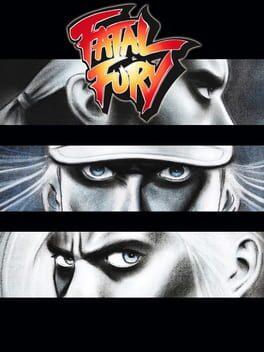
▲
1
▼
When Hiroshi Matsumoto and Takashi Nishiyama were working on the first Street Fighter game, they created a concept for a "caucasian man wearing a leather jacket" who would later be known as Joe in the final game. This character was originally planned to be the protagonist, going so far as to feature him in the opening sequence. But the idea was dropped, and the team ultimately decided on making Ryu the main character. After their move to SNK, still wanting to use their original concept, they based the design of the lead character on that design. This character ultimately ended up becoming Terry Bogard.